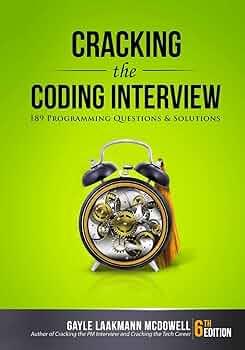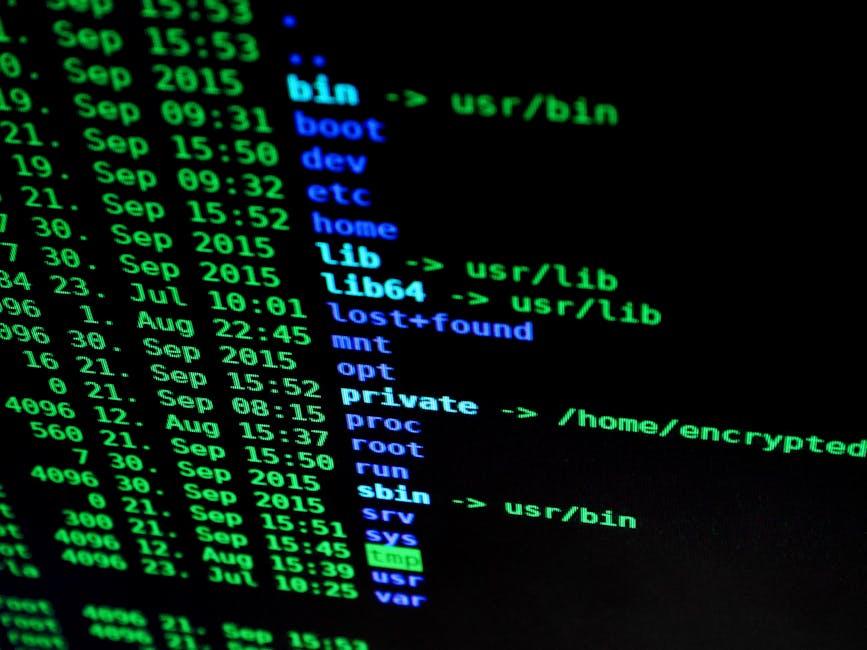In today’s digital age, protecting your financial information is as crucial as guarding the last slice of pizza at a Friday night party. As financial education increasingly shifts online, cybersecurity isn’t just a chapter in your textbook—it’s the secret sauce that keeps your sensitive information from being gobbled up by cyber crooks. Whether you’re navigating the murky waters of online banking, enrolling in a digital finance course, or just trying to figure out what bitcoin actually is, it’s essential to know how to keep your data safe from prying eyes. So, how do you protect yourself from hackers who are as relentless as a dog looking for treats under the couch? Grab your sense of humor (and your digital armor) as we dive into the intriguing world of cybersecurity in financial education, where passwords are your best friends and suspicious links are like advice from Uncle Bob at Thanksgiving—better left ignored!
Cracking the Code: Navigating Cyber Threats in Finance Classes
In today’s digital age, learning about finance isn’t just about balancing budgets and understanding the stock market – it’s also about knowing how to fend off cyber gremlins trying to sneak into your online accounts! Picture this: You’re midway through a thrilling finance class and suddenly get bombarded with a mishmash of complex jargon like “phishing” and “malware.” Don’t sweat it! Navigating this virtual jungle can be as easy as spotting a viral dance move in your TikTok feed. Here’s a toolkit to keep your financial data under lock and key:
- Strong Passwords: Think of your password as a superhero cape. Make it unique, long, and hard to predict. No “12345” nonsense.
- Two-Factor Authentication: It’s like your bank account’s guard dog. Secures entry with just an extra bark (or, okay, a code!).
- Software Updates: Treat this like brushing your teeth. Do it regularly to ensure those bugs get no chance to bite!
Still think the cyber world is merely a bunch of binary code? Let’s jazz it up for you with a quick peek at common cybersecurity mishaps in financial education:
| Cyber Oops! | Funny Outcome | Prevention Tip |
|---|---|---|
| Phishing Frenzy | Clicked a fake email, ended up in an endless loop of cat videos. | Spot the red flags (odd links, shady sender). |
| Password Plop | Used “password” as password, got locked out by pet hamster pic. | Use password managers for smart storage. |
| Wi-Fi Whoops | Logged into sketchy free Wi-Fi, accidentally ordered a manatee costume. | Use Virtual Private Networks (VPNs) when possible. |
Remember, in the wild world of finance, staying sharp on cybersecurity isn’t just smart, it might just save you from unexpected online escapades!
Firewall Follies: Real-Life Lessons from Cybersecurity Blunders
Picture this: the financial sector, often regarded as a vault of secrets, occasionally leaves its front door wide open. That’s right! Even the most secure-looking financial institutions have had their share of security slip-ups. So, what can we learn from these eyebrow-raising anecdotes? First, it’s important to remember that the digital landscape is changing faster than the stock market on a Monday morning. We’ve seen everything from email phishing bonanzas where CEOs “urgently” request gift cards, to employees accidentally clicking on seemingly harmless kitten videos that result in digital stowaways.
Here’s a shortlist of cautionary tales pulled straight from the vault:
- Mistaken Identity: A bank mistakenly wired $90 million to a phantom account because someone failed to spot a tiny typo.
- USB Drive Shenanigans: Tempted employees discovered USB drives labeled “Let’s Party!” in the parking lot. Spoiler: it was a malware fiesta instead.
- The Password Cheat Sheet: An employee thought writing passwords on sticky notes and hiding them under the keyboard was a personal Fort Knox. It wasn’t.
| Cyber Blunder | Involved Tech | Learning Insight |
|---|---|---|
| Email Phishing | Email Systems | Verify before you trust. |
| USB Exploit | USB Drives | Don’t trust a Trojan USB. |
| Weak Passwords | Password Managers | Strengthen password policies. |
Data Defenders Assemble: Tools and Tactics for Bulletproof Safety
Ever wondered how cyber superheroes stay ahead of cyber villains? With the right tools and strategies, of course! You don’t need a cape to be a defender of data; only a savvy mindset and some trusty tools. Here’s your toolkit: a password manager to weave stronger, complex passwords—think of it as your personal digital safe. Install multi-factor authentication because two shields are better than one! Stay one step ahead with antivirus software to kick out those sneaky malware miscreants. And if you want to ace this game, regular software updates are your secret weapon; they patch up weak spots attackers love to pry open.
Being careless with your data is like leaving your front door wide open for cyber tricksters. To outsmart them, here are some everyday tactics: Don the cloak of anonymity while browsing with a reliable VPN. It’s like a secret passageway, keeping prying eyes at bay. Watch out for phishing scams, they often mimic your favorite online store; double-check those sender addresses! Want to know the bottom-line truth? Check out this handy comparison table of the most common cybersecurity tools:
| Tool | Purpose | Fun Fact |
|---|---|---|
| Antivirus Software | Banishes malware | Keeps your system “buffed up”! |
| VPN | Secures internet connection | Think of it as an invisible cloak! |
| Password Manager | Stores passwords securely | Your brain’s backup memory! |
Cyber Shield Training: Action Plans to Outwit Digital Bandits
In today’s digital world, financial education isn’t just about dollars and cents. It’s about making sure those digital cents don’t disappear into some hacker’s piggy bank! To stay one step ahead of the cyber scallywags, you’ll need an action plan that’s as sharp as a cyber ninja. Start with the basics: use strong, unique passwords that even a caffeinated squirrel couldn’t guess. Next, keep your software as fresh as a bakery’s morning bread—ensure automatic updates are on so no sneaky vulnerabilities are left open. And while we’re on gadgets, don’t post about that new smartphone on social media like it’s a medal of honor; it might catch the eye of digital pirates!
- Two-Factor Authentication: Like wearing a belt and suspenders, it keeps your accounts extra secure.
- Suspicious Emails: Delete them faster than you’d ghost a bad date.
- Backup Data: Think of it as your financial information’s insurance policy.
| Action | What It Does |
|---|---|
| Use VPN | Disguises your online actions like a master of disguise. |
| Encrypt Data | Turns your sensitive data into gibberish for snoopers. |
Q&A
Q: Why should I worry about cybersecurity in financial education?
A: Well, unless you’ve always dreamed of crowdfunding a new yacht for hackers or donating your savings to the Don’t-Worry-Your-Bank-Will-Reimburse-You Foundation, keeping your information safe is crucial! Financial education often involves accessing sensitive data, and you don’t want the bad guys getting their hands on your piggy bank!
Q: What are some key threats in this area?
A: Ah, the usual suspects trying to win the Oscar for Most Pesky Cyber Villains. We’ve got the classics like Phishing (the annoying cousin of fishing, where the only catch is your login details), Malware (which multiplies faster than rabbits with access to Red Bull), and those relentless identity thieves who want to try on your financial identity like it’s the latest fashion trend.
Q: What basic steps can I take to protect my financial information?
A: You mean aside from wearing a tinfoil hat and living in an underground bunker? Keep it simple: Use strong passwords that even a supercomputer would say, “Eh, maybe later,” enable two-factor authentication, and make sure your software isn’t older than your high school reunion pictures. And for heaven’s sake, don’t click on that link promising a free cruise!
Q: How can financial educators help improve cybersecurity awareness?
A: Financial educators aren’t just crunching numbers; they’re also ninja warriors fighting the cyber dark arts! They can incorporate lessons on data protection into their curriculum, organize workshops with ethical hackers (the good ones, not the ones ordering pizza on your dime), and use humor to discuss cybersecurity. After all, a little laughter is the best antivirus.
Q: Are there any funny anecdotes about cybersecurity in financial education?
A: Oh, definitely! Like the time a financial education seminar was interrupted by a live demonstration of what not to do, when someone thought “123456” was a solid password. Spoiler alert: it wasn’t. Or when an attendee suggested “Password123” because, you know, they capitalized the “P” this time. Brainstorming these scenarios is like watching a bloopers reel—entertaining but with a lesson at the end!
Q: What should I do if I suspect my information has been compromised?
A: First things first, don’t panic like your Wi-Fi just went out during a streaming marathon. Immediately change your passwords (yes, to something stronger this time), contact your financial institutions, and keep an eye out for any suspicious activities. In short, act faster than a cat knocking things off a shelf. And remember, help is just a phone call away, unlike that Nigerian prince who still owes you $5 million.
The Conclusion
while the world of financial education is rich with opportunities to increase your wealth, it’s also rife with cyber-threats lurking like digital sharks ready to bite into your sensitive information. But fear not, because just like acquiring a taste for fine wine—or finally understanding how Bitcoin works—developing strong cybersecurity habits takes time and practice. Equip yourself with strong, unique passwords that even Sherlock wouldn’t crack, update that software like you promised your IT guy you would, and for heaven’s sake, don’t click on any links promising you $1 million from a long-lost prince. Remember, in the digital financial world, it’s always better to be the quiet, cautious turtle rather than the flashy, reckless hare. Happy (safe) investing!


